After a decade of hard work, numerous twists and turns, and ups and downs, NASA’s new Orion deep space crew vehicle is finally, and officially, marching towards its maiden blastoff in less than two week’s time.
The Orion spacecraft cleared one of the final hurdles to its first launch when top managers from NASA and Lockheed Martin successfully completed a key review of the vehicle’s systems ahead of the looming Dec. 4 flight test.
Orion passed the Flight Readiness Review (FRR) on Thursday, Nov. 20, and officials announced that the spacecraft is “GO” for proceeding on the road to launch – and one day on to Mars!
The FRR is a rigorous assessment of the spacecraft, its systems, mission operations, and support functions needed to successfully complete Orion’s first voyage to space.
Lockheed Martin is the prime contractor for Orion and recently completed its fabrication in the Neil Armstrong Operations and Checkout Building at the Kennedy Space Center in September 2014.

Orion will lift off on a Delta IV Heavy rocket on its inaugural test flight to space on the uncrewed Exploration Flight Test-1 (EFT-1) mission at 7:05 a.m. EST on December 4, 2014, from Space Launch Complex 37 (SLC-37) at Cape Canaveral Air Force Station in Florida.
The United Launch Alliance Delta IV Heavy rocket is the world’s most powerful rocket and the only booster sufficiently powerful to launch the 50,000 pound Orion EFT-1 spacecraft to orbit.
The rocket was transported to pad 37 in late September. Then, on Nov. 12, this path finding Orion spacecraft was itself rolled out to the launch pad and hoisted and bolted atop the Delta IV Heavy.
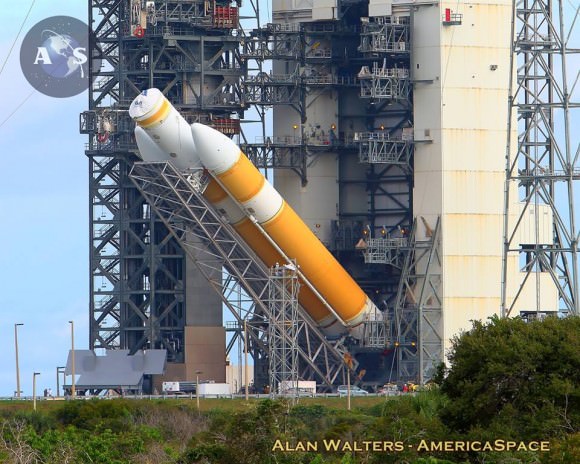
The critical December test flight will pave the way for the first human missions to deep space in more than four decades since NASA’s Apollo moon landing missions ended in 1972.
To learn more about the major events and goals happening during Orion’s EFT-1 mission be sure to check out NASA’s cool new set of infographics explaining the 8 key events in my story – here.
The two-orbit, four and a half hour Orion EFT-1 flight around Earth will lift the Orion spacecraft and its attached second stage to an orbital altitude of 3,600 miles, about 15 times higher than the International Space Station (ISS) – and farther than any human spacecraft has journeyed in 40 years.
EFT-1 will test the rocket, second stage, jettison mechanisms, as well as avionics, attitude control, computers, and electronic systems inside the Orion spacecraft.
Then the spacecraft will carry out a high speed re-entry through the atmosphere at speeds approaching 20,000 mph and scorching temperatures near 4,000 degrees Fahrenheit to test the heat shield, before splashing down for a parachute assisted landing in the Pacific Ocean.
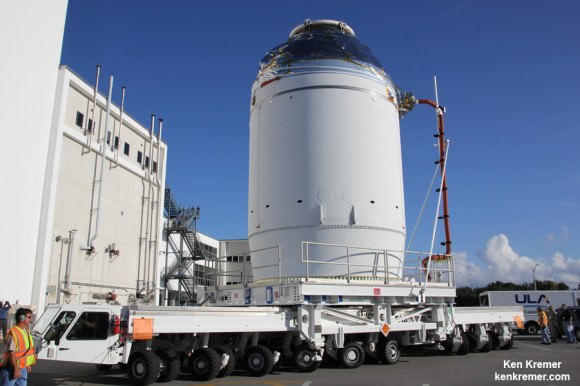
Orion is NASA’s next generation human rated vehicle that will carry America’s astronauts beyond Earth on voyages venturing farther into deep space than ever before – beyond the Moon to Asteroids, Mars, and other destinations in our Solar System.
Watch for Ken’s ongoing Orion coverage and he’ll be onsite at KSC in the days leading up to the historic launch on Dec. 4.
Stay tuned here for Ken’s continuing Orion and Earth and planetary science and human spaceflight news.
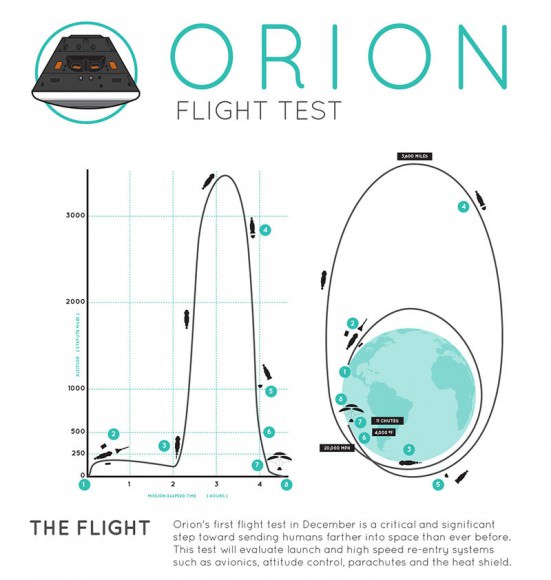
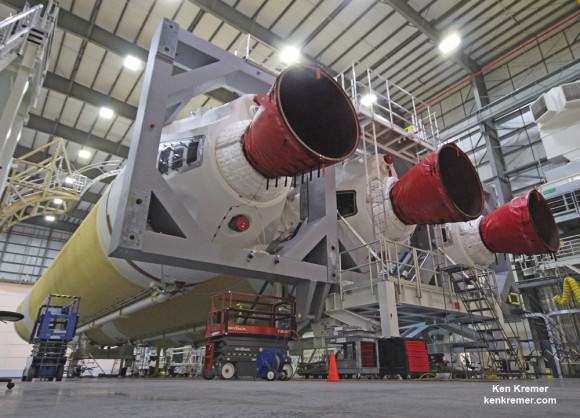

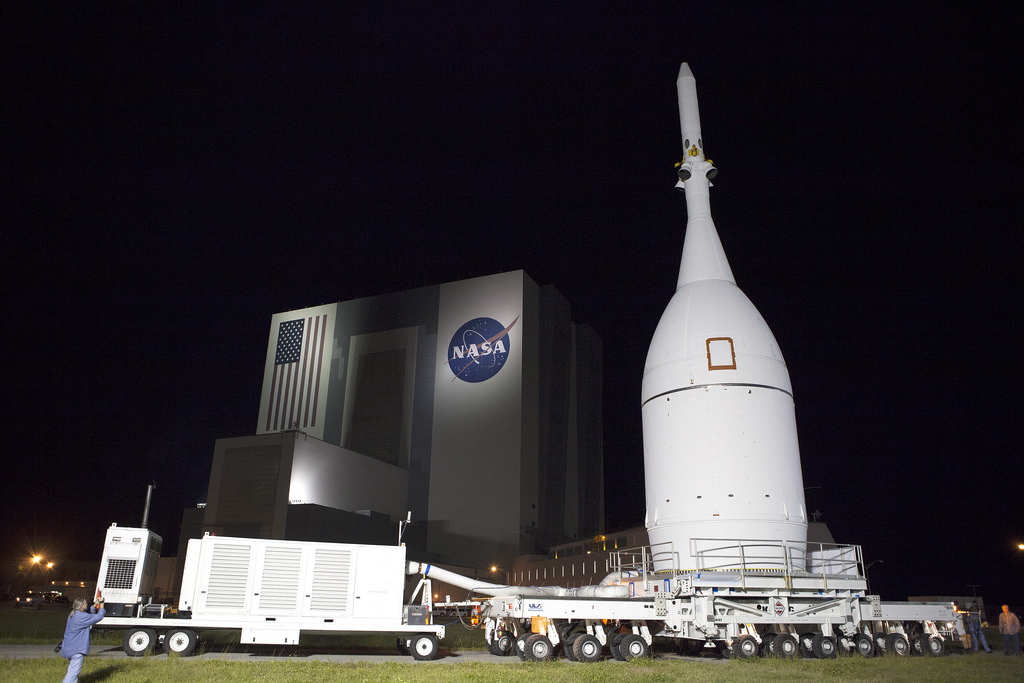
What a beautiful ship… reminds me of the first launch of Columbia with the same kind of excitement building until launch day. GO Orion! When do we get to see the whole thing fully assembled and erect on the pad?
I too was wondering when Orion will join the stack. Obviously the reasons and political background are very different to the 60’s, but there does seem to be an amount of excitement and impetus building for the project now. The 60’s was a magical era to live through for anyone following the ‘space race’. Let’s hope all the magic dust wasn’t used up first time round!
Wow, progress!